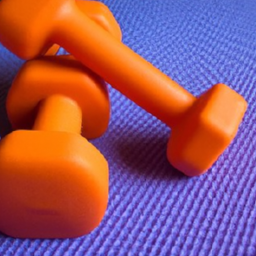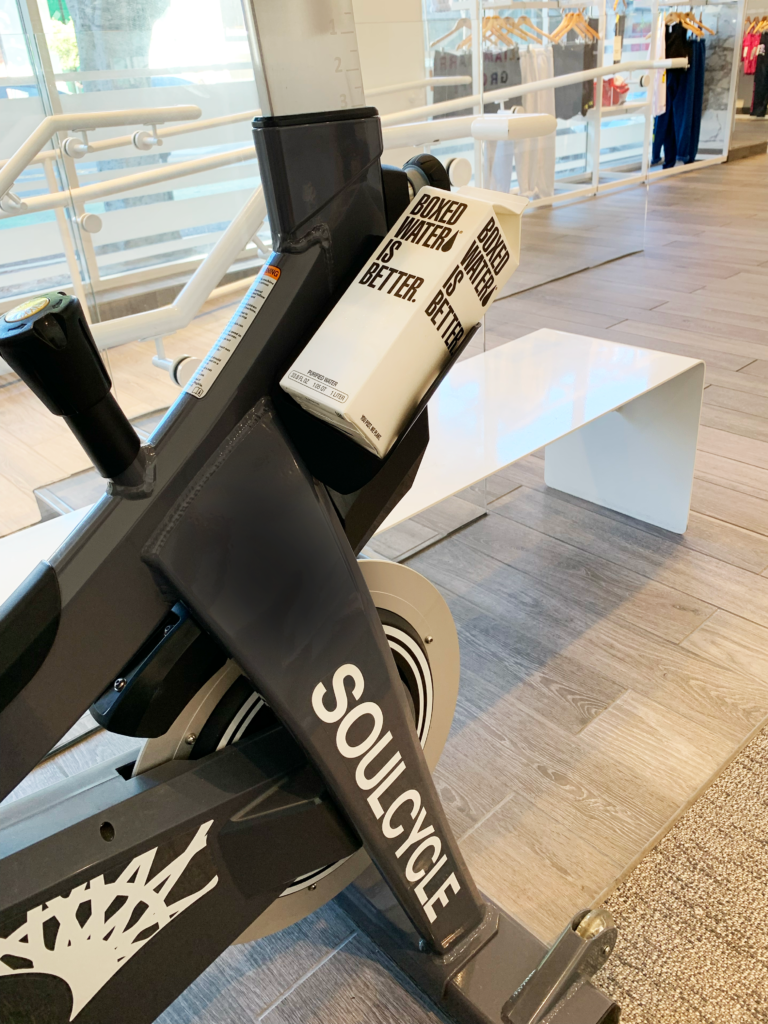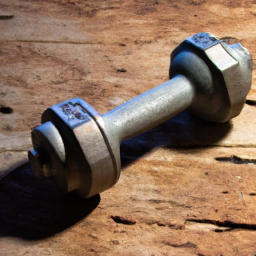In this article, you’ll learn about the 7-minute workout routine that is backed by science and can help you achieve quick fitness gains. We’ll explore the benefits of this efficient workout and how it can fit into even the busiest of schedules. From the specific exercises to the recommended intensity, we’ll provide all the details you need to know to get started. By the end, you’ll have a clear understanding of how this workout can benefit your overall fitness and make a positive impact on your health.
Benefits of the 7-Minute Workout Routine
Increased cardiovascular fitness
One of the primary benefits of the 7-Minute Workout Routine is the improvement in cardiovascular fitness. The high-intensity exercises included in this workout routine, such as jumping jacks and high knees, engage the entire body and elevate the heart rate. Over time, these exercises help to strengthen the heart and improve its efficiency in supplying oxygen-rich blood to the muscles.
Improved muscular strength and endurance
Another advantage of the 7-Minute Workout Routine is the enhancement of muscular strength and endurance. The combination of exercises like push-ups, squats, and lunges helps to target multiple muscle groups, promoting overall body strength. By consistently performing these exercises with proper form and technique, individuals can experience an increase in muscle tone and endurance.
Enhanced metabolism and calorie burn
The 7-Minute Workout Routine is also known for its ability to boost metabolism and promote calorie burn. The high-intensity nature of these exercises stimulates the body’s energy systems, leading to an increased metabolic rate. This means that even after the workout is complete, your body continues to burn calories at a higher rate. Incorporating this routine into your fitness regimen can be an effective strategy for weight management and fat loss.
Preparation for the 7-Minute Workout Routine
Consult with a doctor or fitness professional
Before starting any new exercise program, it is essential to consult with a healthcare professional or fitness expert. They can assess your current fitness level and provide guidance on whether the 7-Minute Workout Routine is suitable for you. This step is especially crucial if you have any pre-existing medical conditions or injuries that may affect your ability to perform certain exercises.
Choose a suitable location
Selecting an appropriate location for your workout is essential to ensure safety and convenience. Ideally, you should have enough space to perform each exercise without any obstacles or distractions. Whether you choose to exercise outdoors, in a fitness studio, or at home, make sure the area is well-lit and has a non-slip surface.
Gather necessary equipment
The great thing about the 7-Minute Workout Routine is that it requires minimal equipment. Most of the exercises can be done using just your body weight. However, there are a few props that can be helpful, such as a yoga mat for added cushioning during floor exercises like abdominal crunches and a sturdy chair for step-ups and triceps dips. It is important to have these items readily available before starting your workout.
Exercises in the 7-Minute Workout Routine
Jumping jacks
Start the routine with jumping jacks, a classic exercise that gets the heart pumping and engages multiple muscle groups. Begin by standing with your feet together and arms by your sides. Jump up, spreading your legs wider than hip-width and raising your arms overhead. Jump back to the starting position and repeat for the desired number of repetitions.
Wall sit
To perform a wall sit, stand with your back against a wall and lower your body into a sitting position, as if you were sitting in an imaginary chair. Keep your back against the wall and your thighs parallel to the ground. Hold this position for a set amount of time, focusing on engaging your quadriceps and maintaining proper form.
Push-ups
Push-ups are an excellent exercise for building upper body strength. Start in a plank position with your hands slightly wider than shoulder-width apart and your body in a straight line from head to toe. Lower your body by bending your elbows, keeping them close to your sides, until your chest nearly touches the ground. Push back up to the starting position, fully extending your arms. Modify the exercise by performing push-ups on your knees if needed.
Abdominal crunches
Lie on your back with your knees bent and feet flat on the ground, hip-width apart. Place your hands behind your head, elbows opened wide. Engage your abdominal muscles and lift your head, neck, and shoulder blades off the ground, curling towards your knees. Lower back down with control and repeat the movement for the desired number of repetitions.
Step-up onto a chair
Using a sturdy chair as an elevated platform, step up onto it with one foot, followed by the other. Step back down with the first foot, followed by the other. Continue alternating legs for the desired number of repetitions. This exercise targets the muscles in your legs, especially your quadriceps and glutes.
Squats
Stand with your feet shoulder-width apart, toes slightly turned out. Engage your core and begin to lower your body as if sitting back into a chair, keeping your weight in your heels. Lower until your thighs are parallel to the ground, then push through your heels to return to a standing position. Squats are an effective exercise for targeting the muscles in your lower body, including your quadriceps, hamstrings, and glutes.
Triceps dips
Sit on the edge of a sturdy chair, placing your hands on the seat next to your hips, fingers pointing forward. Walk your feet forward and lift your body off the chair, keeping your arms straight. Bend your elbows and lower your body until your upper arms are parallel to the ground. Pause, then push back up to the starting position. Triceps dips primarily target the triceps muscles at the back of your upper arms.
Plank
Begin in a push-up position, with your hands directly underneath your shoulders and your body in a straight line. Lower yourself onto your forearms, keeping your elbows directly beneath your shoulders. Engage your core and hold this position for a set amount of time. Plank is an excellent exercise for strengthening your core, including your abdominal muscles and lower back.
High knees
Stand with your feet hip-width apart. Begin by lifting one knee as high as possible while hopping on the opposite foot. Quickly switch legs, bringing the opposite knee up. Continue alternating legs, lifting your knees as high as possible, as if you were running in place. This exercise elevates your heart rate while engaging your leg muscles.
Lunges
Stand with your feet hip-width apart. Take a big step forward with one leg, bending both knees to lower your body towards the ground. Make sure your front knee is directly above your ankle, and your back knee is close to or touching the ground. Push back up with your front leg to return to the starting position. Repeat on the other side. Lunges work the muscles in your legs, including your quadriceps, hamstrings, and glutes.
Push-up with rotation
Start in a push-up position, with your hands slightly wider than shoulder-width apart and your body in a straight line. Perform a push-up by bending your elbows and lowering your body towards the ground, then push back up to the starting position. After completing the push-up, rotate your body to the side, lifting one arm towards the ceiling. Return to the starting position and repeat the push-up, followed by rotation on the other side. This exercise targets both your upper body and core muscles.
Side plank
Begin by lying on your side with your legs straight and stacked on top of each other. Position your elbow directly under your shoulder, forearm on the ground. Engage your core and lift your hips off the ground, creating a straight line from head to toe. Hold this position for a set amount of time, then switch sides. Side plank primarily targets the muscles in your core and obliques.
Proper Form and Technique
Maintain proper posture
Maintaining proper posture throughout each exercise is crucial for maximizing the benefits and avoiding injury. For exercises performed standing, such as squats and lunges, make sure to keep your head aligned with your spine and your shoulders relaxed. When performing exercises on the ground, such as push-ups and planks, maintain a straight line from head to toe. Avoid overarching or rounding your back.
Engage the correct muscles
To get the most out of each exercise, it is important to engage the correct muscles. For example, during squats and lunges, focus on using your leg muscles to lower and lift your body, rather than relying solely on momentum. During abdominal crunches, engage your core and avoid straining your neck or using momentum to lift your upper body. Proper muscle engagement ensures optimal results and reduces the risk of injury.
Breathe properly
Proper breathing is essential during the 7-Minute Workout Routine. Inhale deeply before starting each exercise and exhale during the exertion phase. For example, during push-ups, inhale as you lower your body towards the ground and exhale as you push back up. Maintaining a steady and rhythmic breathing pattern helps oxygenate your muscles and enhances performance.
Use full range of motion
To maximize the effectiveness of each exercise, strive to use a full range of motion. This means performing each movement through its complete range, while maintaining control and proper form. For example, during squats, lower your body until your thighs are parallel to the ground, and then push back up to a standing position. By utilizing a full range of motion, you engage the targeted muscles more effectively.
Interval Training and Timing
Explanation of interval training
The 7-Minute Workout Routine is based on the concept of interval training, which involves alternating between periods of high-intensity exercise and brief rest periods. This approach has been shown to be highly effective in improving cardiovascular fitness, boosting metabolism, and burning calories. By utilizing interval training, you can make the most out of your 7-minute workout.
Recommended timing for each exercise
To ensure an effective workout, aim to perform each exercise for 30 seconds, as intensely as possible, followed by a 10-second rest. This timing allows for a balance between challenging your body and allowing for adequate recovery to maintain proper form and prevent fatigue. It is important to listen to your body and adjust the timing or intensity as needed.
Rest intervals and recovery periods
In addition to the built-in 10-second rest periods between exercises, it is recommended to incorporate longer rest intervals and recovery periods into your workout routine. This allows your body to recover and recharge before jumping into the next set of exercises. A rest interval of 1-2 minutes between each circuit, consisting of multiple exercises, is ideal for most individuals. Adjust the rest intervals based on your fitness level and capabilities.
Safety Considerations
Possible modifications for beginners or individuals with physical limitations
While the 7-Minute Workout Routine is designed to be accessible to most individuals, modifications may be necessary for beginners or those with physical limitations. For example, beginners can start by performing each exercise for a shorter duration or with less intensity. Individuals with joint issues or injuries can opt for low-impact variations or substitute certain exercises with ones that put less stress on the affected areas. It is important to listen to your body and make modifications as needed to prevent further injury.
Warming up and cooling down
Before diving into the 7-Minute Workout Routine, it is essential to warm up your body and prepare your muscles for exercise. This can be achieved through dynamic stretches and light aerobic movements, such as jogging in place or jumping jacks, for 5-10 minutes. Similarly, at the end of the workout, cool down with static stretches and gentle movements to gradually bring your heart rate and breathing back to normal.
Listening to the body’s signals
One of the most critical safety considerations during any workout routine is listening to your body’s signals. Pay attention to any pain or discomfort and modify or stop exercises accordingly. It is normal to feel some muscle soreness after a workout, but sharp or persistent pain should not be ignored. Pushing through pain can lead to further injury and hinder your progress. Always prioritize safety and seek guidance from a healthcare professional or fitness expert if needed.
Progression and Adaptation
Increasing exercise intensity
As your fitness level improves, you can gradually increase the intensity of your 7-Minute Workout Routine. This can be achieved by performing each exercise for a longer duration or increasing the number of repetitions. Additionally, you can introduce more challenging variations or progressions of each exercise. For example, adding a jump to your squats or performing push-ups on an unstable surface like a Bosu ball. Continually challenging your body ensures ongoing improvements and prevents plateauing.
Adding variations or modifications
To keep your workout routine engaging and prevent boredom, you can incorporate variations or modifications of the 7-Minute Workout Routine. This can involve swapping out specific exercises with similar movements that target the same muscle groups. For example, replacing traditional push-ups with incline push-ups or knee push-ups. By introducing variations or modifications, you challenge your body in new ways while still reaping the benefits of the workout routine.
Incorporating additional exercises
While the 7-Minute Workout Routine is designed to be a quick and effective full-body workout, you can supplement it with additional exercises or activities to further enhance your fitness gains. This can include cardiovascular exercises like running or cycling on alternate days or including resistance training with weights or resistance bands. It is important to strike a balance between the 7-Minute Workout Routine and other forms of physical activity to prevent overtraining and allow for proper recovery.
Scientific Findings on the 7-Minute Workout Routine
Studies supporting the effectiveness
Numerous scientific studies have examined the effectiveness of the 7-Minute Workout Routine. A study published in the American College of Sports Medicine’s Health & Fitness Journal found that this high-intensity circuit training routine produced significant improvements in cardiovascular fitness and muscular strength and endurance. Other studies have supported these findings, highlighting the efficiency and time-saving benefits of this type of workout.
Comparison to traditional lengthy workouts
The 7-Minute Workout Routine has gained popularity due to its time efficiency compared to traditional lengthy workouts. While longer workouts certainly have their merits, research has shown that shorter, high-intensity workouts can deliver similar or even superior results in terms of cardiovascular fitness and calorie burn. This makes the 7-Minute Workout Routine a viable option for individuals with busy schedules or limited time for exercise.
Effects on various fitness parameters
In addition to improving cardiovascular fitness and muscular strength and endurance, the 7-Minute Workout Routine has been shown to have positive effects on various other fitness parameters. These include improvements in flexibility, balance, and body composition. The combination of high-intensity exercises targeting different muscle groups contributes to these overall fitness gains. However, it is worth noting that individual results may vary, and consistency is key for achieving desired outcomes.
Other Considerations
Incorporating the routine into a busy schedule
One of the key advantages of the 7-Minute Workout Routine is its flexibility and adaptability to fit into a busy schedule. Whether you have just a few minutes to spare in the morning, during a lunch break, or in the evening, this workout can be performed anytime, anywhere. It eliminates the need for lengthy gym sessions or specialized equipment, making it a convenient option for those with time constraints.
Combining it with other forms of physical activity
While the 7-Minute Workout Routine can be an effective standalone workout, it can also be combined with other forms of physical activity to create a well-rounded fitness routine. This can include activities such as walking, swimming, or participating in group fitness classes. By incorporating different types of exercise, you can address various aspects of fitness, including cardiovascular health, strength, flexibility, and coordination.
Tracking progress and setting goals
To stay motivated and track your progress, it can be helpful to set goals and keep a record of your workouts. This can involve tracking the number of repetitions or the duration of each exercise and aiming to improve over time. You can also take measurements of your body composition or periodically assess your cardiovascular fitness through a fitness assessment. By tracking your progress, you can see tangible evidence of your fitness gains, which can further inspire and drive you to continue with the 7-Minute Workout Routine.
Conclusion
The 7-Minute Workout Routine offers a time-efficient and effective way to improve fitness. With its high-intensity exercises targeting multiple muscle groups, it can enhance cardiovascular fitness, muscular strength and endurance, and promote calorie burn. By following proper form and technique, listening to your body’s signals, and gradually progressing, individuals can experience significant gains in a short period of time. However, it is important to consult with a professional to customize the routine to your individual needs and abilities. With consistency and dedication, the 7-Minute Workout Routine can be a valuable addition to your fitness journey, allowing you to achieve your health and wellness goals efficiently and effectively.





